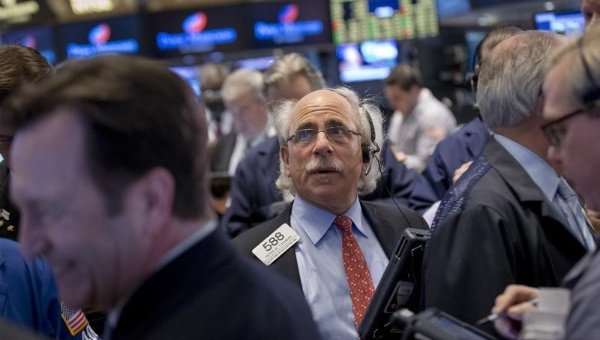On Friday, Yum! Brands, Inc. (NYSE:YUM)’s shares declined -0.30% to $87.76.
Yum! Brands, Inc. ( YUM ) stated results for the second quarter ended June 13, 2015, counting EPS of $0.69, not taking into account Special Items. Stated EPS was $0.53.
SECOND-QUARTER HIGHLIGHTS
- Worldwide system sales grew 3%. Worldwide restaurant margin was even at 15.5%, and worldwide operating profit reduced 1%.
- Total international development was 291 new restaurants; 75% of this development occurred in emerging markets.
- China Division system sales declined 4%, as 7% unit growth was offset by a 10% same-store sales decline. Restaurant margin reduced 2.2 percentage points to 14.6%. Operating profit reduced 25%.
- KFC Division system sales raised 6%, driven by 2% unit growth and 3% same-store sales growth. Operating margin raised 1.3 percentage points to 21.9%. Operating profit raised 10%.
- Pizza Hut Division system sales raised 1%, driven by 2% unit growth. Same-store sales were even. Operating margin reduced 0.9 percentage points to 22.6%. Operating profit reduced 1%.
- Taco Bell Division system sales raised 9%, driven by 3% unit growth and 6% same-store sales growth. Operating margin raised 4.7 percentage points to 29.5%. Operating profit raised 29%.
YUM! Brands, Inc., together with its auxiliaries, operates quick service restaurants. It operates in five segments: YUM China, YUM India, the KFC Division, the Pizza Hut Division, and the Taco Bell Division. The company develops, operates, franchises, and licenses a system of restaurants, which prepare, package, and sell various food items. As of February 4, 2015, it operated about 41,000 restaurants in about 120 countries and territories primarily under the KFC, Pizza Hut, and Taco Bell brands, which specialize in chicken, pizza, and Mexican-style food categories.
Brinker International, Inc. (NYSE:EAT)’s shares gained 1.73% to $59.90.
Brinker International, Inc. (EAT), has planned its earnings conference call at 10:00 a.m. Eastern Time on Thursday, Aug. 6, 2015 to review fourth quarter fiscal 2015 earnings, which will be declared before the market opens on Aug. 6, 2015.
Brinker International, Inc. owns, develops, operates, and franchises casual dining restaurants under the Chili’s Grill & Bar and Maggiano’s Little Italy brands worldwide. As of September 24, 2014, it owned, operated, or franchised 1,622 restaurants. The company was founded in 1975 and is based in Dallas, Texas.
At the end of Friday’s trade, ACCO Brands Corporation (NYSE:ACCO)‘s shares surged 1.11% to $8.18.
ACCO Brands Corporation (ACCO), a world leader in branded school, office and consumer products, stated its second quarter results for the period ended June 30, 2015.
Second Quarter Results
Net sales reduced 8% to $394.7 million from $427.7 million in the preceding-year quarter. On a constant currency basis, sales reduced 1%. Operating income raised by $5.7 million to $49.2 million from $43.9 million in the preceding year, despite a $3.1 million impact from foreign currency translation. The improvement was primarily due to lower selling, general and administrative expenses in addition to cost savings and productivity improvements. Net income was $27.7 million, or $0.25 per share, contrast to net income of $21.3 million, or $0.18 per share, in the preceding-year quarter. Adjusted net income improved 19% to $26.8 million, or $0.24 per share, from $22.6 million, or $0.19 per share, in the preceding-year quarter. The improvement was primarily the result of cost savings and productivity improvements which offset the negative impact of foreign currency translation and lower sales volumes. During the quarter the company reduced its fully-diluted shares by 3.1 million.
ACCO Brands Corporation manufactures and markets office, school, and calendar products, and select computer and electronic accessories primarily in the Unites States, Northern Europe, Brazil, Canada, Australia, and Mexico. The company operates through three segments: ACCO Brands North America, ACCO Brands International, and Computer Products Group. It offers office products, school supplies, and calendar products under the AT-A-GLANCE, Day-Timer, Five Star, GBC, Hilroy, Marbig, Mead, NOBO, Quartet, Rexel, Swingline, Tilibra, Wilson Jones, and other brand names.
Lear Corporation (NYSE:LEA), ended its Friday’s trading session with -0.70% loss, and closed at $104.07.
Lear Corporation (LEA), a leading global supplier of automotive seating and electrical distribution systems, recently stated financial results for the second quarter.
Highlights comprise:
- Sales of $4.6 billion, up 1% from a year ago; 10% growth not taking into account impact of foreign exchange.
- Record core operating earnings of $337 million, up 23%.
- Adjusted earnings per share of $2.82, up 33%.
- Core operating margin of 7.3%, up from 6.0% a year ago.
- Improved margins in both business segments.
- Returned $142 million to shareholders through share repurchases and dividends.
- Increasing full year outlook for earnings and free cash flow.
Lear Corporation designs, develops, engineers, manufactures, assembles, and supplies automotive seating, electrical distribution systems, and related components primarily to automotive original equipment manufacturers worldwide. It operates through two segments, Seating and Electrical.
DISCLAIMER:
This article is published by www.wsnewspublishers.com. The Content included in this article is just for informational purposes only. All information used in this article is believed to be from reliable sources, but we make no representations or warranties of any kind, express or implied, about the completeness, accuracy, or reliability with respect to this article.
All visitors are advised to conduct their own independent research into individual stocks before making a purchase decision.
Information contained in this article contains forward-looking information within the meaning of Section 27A of the Securities Act of 1933 and Section 21E of the Securities Exchange Act of 1934, counting statements regarding the predictable continual growth of the market for the corporation’s products, the corporation’s ability to fund its capital requirement in the near term and in the long term; pricing pressures; etc.
Any statements that express or involve discussions with respect to predictions, expectations, beliefs, plans, projections, objectives, aims, assumptions, or future events or performance may be forward looking statements. Forward-looking statements are based on expectations, estimates, and projections at the time the statements are made that involve a number of risks and uncertainties which could cause actual results or events to differ materially from those presently anticipated. Forward looking statements may be identified through the use of such words as expects, will, anticipates, estimates, believes, or by statements indicating certain actions may, could, should might occur.



